
It's a good example of how we always have two overlapping weather patterns. The winter solstice is past (Christmas), the sun is coming north again, the daylight is longer, the sun is higher in the sky, and stronger. But the earth is both slow to warm and cool. It's still reacting to those tough months of November and December when the sun went further and further away. As long as the sun can get through the earth's winter moods it can be very warm and spring-like. And the wild plants (especially the weeds) are looking for just that opportunity.
I took a walk up to Home Depot for a hook and eye latch, so that I can lock the pumphouse door from the inside, and not have to worry about it being torn off again in a wind. Along the way I took some photos of all the wild foods and potential wild foods I saw, as well as nibbled on some. Nothing makes me feel better than an edible plant walk - whether it's the nutrients, the energy, the purging influence, or a sense of connection to the land . . . maybe all of the above.
There's a persimmon in fruit just down the road from us:


The ripening can be affected by so many things - the amount of solar radiation, how much moisture the tree has, and competition; its exposure, its latitude, elevation; and often it can just depend on the tree. Obviously the more sun it gets the earlier the ripening (contrary to 'frost' theories), and the more moisture the roots have access to, the bigger the fruit - though genes play a part.
The last place we lived in Atlanta had a large pond with islands. One island was a sort of rookery for green herons - they always nested there, in the alders. Canadian geese nested there also. The other island was covered in passionfruit vines, Gulf Fritillary cocoons and caterpillars (which only feed on passionfruit), and a few big persimmon trees, with a couple of alders. These persimmons had all the sun they wanted, and all the moisture from the pond. So they did something pretty unique for a wild food - they put out a huge dependable harvest year after year.
Normally with wild foods the greatest problem is a lack of consistency. A place with a blowout harvest one year could have nothing the next. I've seen it with grapes, autum olives, elderberries, prickly pear, etc. . . . just about everything. But the persimmons on the island put out every single year.
And with all that moisture the fruits were huge . . . the size of crabapples. We carefully picked the first ripe ones off the tree in late September, long before any frost. You can tell by look and feel whether they're ripe or puckery. There's nothing like the taste of the first persimmons, warm on the tree, clean, a firm, pulpy texture, bright orange, when the sugar is just right. When they get overripe the sugar begins to spoil and they get purple and mashed and datey and not so good - too many and you swerve from them in nausea. Eventually we'd gather whole bags of persimmons, and take them home. Since you had to canoe out to the island we had them all to ourselves.
They are slow to process however. I'm sure there's some tool or technique which makes them quick work, but I've yet to find it. We mash them through a strainer and later pick out the seeds from the skin. Each persimmon has a few large flat oval seeds, and a lot of the flesh tends to stick to them, so it's messy and slow to separate.
As far as recipes, I've made persimmon bread and that kind of thing - but the flavor I think gets lost in the baking. I love Steve Brill's recipe for persimmon pudding in IDENTIFYING AND HARVESTING EDIBLE AND MEDICINAL PLANTS [a book I highly recommend]. I've made it several times - the finished product is nothing like pudding, it's more the consistency of a smoothie . . . but the best smoothie in the world, with all that persimmon flavor intact.
When it's serious persimmon gathering time you need to get out some sheets. We were on a canoe trip once along Fontana Lake in western North Carolina, about October, and discovered several persimmons loaded with fruit high on the bank. They were covered like Christmas trees with tons of bright orange ping-pong ball-size fruit. Some was ripe, and smashed on the ground . . . but most was hard and still on the tree.
It was ideal persimmon conditions - access to unlimited water, the edge of the woods with a ton of sun, and sand . . . persimmons love sand. They'll often colonize open barren sandy areas in the woods . . . we'd see them do this on Pigeon Mtn. in Georgia - but the conditions were too harsh and dry for them to produce much fruit. Of course some were probably male . . . only the females produce fruit.
We hiked over to the trees and laid out sheets and blankets and foam pads and tarps. Then I started shaking the tree. It is a workout shaking a forty foot tree. You have to get a rhythm down. But if you keep at it you can shake down almost 3/4ths of the fruit. Of course none of it's ripe . . . but it'll get ripe fast, just set it in a bag or basket somewhere.
But let me move on . . . enough about persimmons.
Wait - one last persimmon story.
The day we moved into our apartment (September 9th), back from Tennessee, we noticed a tree covered in persimmons just off our deck. There were many ripe persimmons smashed on the ground. I gathered a small bowl of them.
But the interesting thing was the racoons. Up in the crotch of the tree, there were two racoons hanging out and waiting for night. It looked like two siblings, grooming each other and playing a little. We all stood out on the deck and watched them. They were only 20 feet away. It was an auspicious start for our new place. But it wasn't long before it became the usual depressing city existence. Anyway . . .
The next thing I found was some privet:

Now I know the plant expert here is wondering why I put a thing in like privet - it's poisonous, right? It's in my PLANTS THAT POISON book as having poisonous berries, and to keep it away from children. The whole species (ligustrum) is nowhere to be found in Couplan's exhaustive THE ENCYCLOPEDIA OF EDIBLE PLANTS OF NORTH AMERICA (the bible of edible plants in this country - a must have). Some books say the berries, like yew, have an edible fleshy part, and it is the seed that is toxic (though nowhere near as toxic as yew). There's even a story of 120 robins and 7 waxwings dropping dead to the sidewalk, supposedly poisoned by privet berries.
This is how it often is with plants . . . a sea of contradictory information. I've seen robins and waxwings eat privet berries for years, as well as many other songbirds. That's what got me to first start trying them up on Kennesaw mountain. It was really only the bitterness of the berries that made me write them off (they're in the olive family, and bitter just like raw olives - which you can gather right from the streets in Tucson, AZ).
But these privet berries near us are pretty mild, almost tasteless, like a blue-back greenbriar berry. The story on the poisoned robins hypothesizes that the seeds somehow exploded during a severe freeze/thaw cycle and contaminated the flesh of the berries. But who knows. Last I heard they're still doing autopsies.
Considering how common privet berries are in the south, it would be great if they were a possible edible. However, I'd eat them only in moderation - like a few. Being in the olive family, they're probably harmless - but it's when you start eating something in mass quantities on an empty stomach (such as a survival situation) that you find out whether something is safe or not for real.
I like to try things for myself. Take the pokeweed for instance. The ink-black berries are everywhere in the summer. You think to yourself, if only they were edible . . . at the very least it'd be a major hit of antioxidants. So one day I tried one, though everybody knows they're poisonous . . . then went and laid out in the sun beside a fledgling chestnut for a while. And I can confirm they are indeed poisonous. I felt my pulse race and an intense heat sensation that lasted about 10 minutes. But afterwards I was fine.
The next thing I come across on my walk is an Oregon grape:


I once picked a ton of Oregon grapes in northern New Mexico, down off the side of a road in Santa Fe National Forest. I cleaned out a lot of litter while I was at it too, cans and bottles and that kind of thing. I felt like I was somehow 'giving back' to the plants by cleaning up their living area.
But with what I've read of permaculture, the bottles and cans may have been leaking nutrients and giving the area increased warmth and wind resistance, helping the plants to thrive. So maybe I was actually screwing them.
What I so like about permaculture is the Zen-like aconceptual non-judgemental approach (very childlike) . . . you have to deeply evaluate a site and how everything's operating before you start ripping out trees and rock and following a tidy sense of order - which is usually detrimental.
I find a young pine and try the needles:
But as for now, any light green needles can be used for tea. Any needles for that matter, but usually the lighter the younger, and the easier the flavor is to extract. Pick about a palmful of needles, dice them very fine, and put them in a bag and steep it for tea - usually in boiling water then immediately remove it from heat. This tea is transparent . . . and being used to dark tannin teas you might think you're just drinking hot water. But the mild flavor is there, a little aroma, and a load of vitamins and nutrients. The tea alone can cure scurvy - the Indians used it for Europeans just off ships whose teeth were falling out.
I come across an ornamental fruit tree, between some maples and oaks:
Here are some shots of the tree. Here's the cherry bark, marked with horizontal lines:

Always be on the lookout for apples. People have been planting them a long long time. We've encountered large wild apples growing by Cherry Creek Campground in the Gila; off the Guadalupe River in the Jemez region of northern New Mexico; at the top of Frozen Head Peak in Tennessee; off the side of the road up on Pigeon Mountain, Georgia . . . they're everywhere. And just as good as store-bought apples, if not better.
On to the greens.
The henbit is everywhere. Just look at this strip of henbit beside the road:
There's an understory of young chickweed beneath it which makes it so lush.
Here's the henbit along the wall:

You can eat the entire thing. Very mild, sweet, grassy. I like to pick the tops off rather than eat the stems. I do the same with chickweed.
Here's some young mouse-eared chickweed along the same wall:
There isn't a lawn without chickweed and it's excellent. The 'star' chickweed is taller and lacks the down of mouse-eared chickweed . . . so it's superior. It is a very very common weed. You can pick buckets of it.
Here's some wood sorrel (oxalis) along the same wall:

I also found some cress:
Has an excellent mild mustard flavor (it's in the mustard family), especially at this stage. The most common variety we usually see around here is Pennsylvania Bittercress. But I've given up worrying over pinpointing exact species (they interbreed at such a rate even botanists can't keep up). It's more important to know your families. As an analogy, it's far more important to know that a creature's a gorilla than exactly what type of gorilla. Once you know your families, plants make a lot more sense, and they're far easier to identify and understand as far as food and medicine.
Here's some English plantain, with some chickweed beside it:
 With plantain you go for the young tender inner leaves, still unfolded, right at the center. As they get older they get too stringy. They're actually a little salty, very good. Both common and English plantain are about the same. My daughters and I used to spend a half-hour gathering young common plantain leaves for salad every night up on Black Balsam (the edge of the Shining Rock Wilderness in North Carolina). Eventually just a photo of the plant brought out a certain emotion in me - an appreciation for how it had nourished me.
With plantain you go for the young tender inner leaves, still unfolded, right at the center. As they get older they get too stringy. They're actually a little salty, very good. Both common and English plantain are about the same. My daughters and I used to spend a half-hour gathering young common plantain leaves for salad every night up on Black Balsam (the edge of the Shining Rock Wilderness in North Carolina). Eventually just a photo of the plant brought out a certain emotion in me - an appreciation for how it had nourished me.Here's dandelion:
 You can steam the entire plant. The young inner leaves are great raw. The best is the flower:
You can steam the entire plant. The young inner leaves are great raw. The best is the flower: The dandelion flower is one of the best wild edible foods - I'd put it at #2 on my list, behind sow thistle flowers, which are eaten the same way. The key is to pinch off the calyx and remove the bitter white latex sap. Here's a photo:
The dandelion flower is one of the best wild edible foods - I'd put it at #2 on my list, behind sow thistle flowers, which are eaten the same way. The key is to pinch off the calyx and remove the bitter white latex sap. Here's a photo: Once you've pinched it off you should see only the filaments of the flower, no more sap (the sap is very bitter). The flower eaten raw like this is sweet, meaty, filling, a trace to no trace of bitterness . . . a very complete food. If you're ever starving, or very, very hungry, eat a ton of these. I've done it, and the hunger goes away.
Once you've pinched it off you should see only the filaments of the flower, no more sap (the sap is very bitter). The flower eaten raw like this is sweet, meaty, filling, a trace to no trace of bitterness . . . a very complete food. If you're ever starving, or very, very hungry, eat a ton of these. I've done it, and the hunger goes away.Here's some wild onion:
 The green stems are excellent and just like scallions. I have dug up and dried out the bulbs but they're small. There's nothing like the fresh taste of onion in the spring. It's very purging. You'll see it in every lawn, especially where people are slow to start mowing.
The green stems are excellent and just like scallions. I have dug up and dried out the bulbs but they're small. There's nothing like the fresh taste of onion in the spring. It's very purging. You'll see it in every lawn, especially where people are slow to start mowing.Here's an old tattered patch of violets:
 They must have come up in an earlier warm spell.
They must have come up in an earlier warm spell.And don't forget plain old grass:
 All grass is edible, and anything under 6" is easy to chew and digest. Wild grass can be sweet to mild to bitter . . . .it's usually surprisingly good. We had a grass come up in the spring off the Gila River in New Mexico which was excellent raw. We could eat it all day. Very sweet. I once gathered heaps of crabgrass and ran it through a manual wheatgrass juicer to make a bitter powerful tonic. Nothing is healthier than grass. It's how so many animals live off it.
All grass is edible, and anything under 6" is easy to chew and digest. Wild grass can be sweet to mild to bitter . . . .it's usually surprisingly good. We had a grass come up in the spring off the Gila River in New Mexico which was excellent raw. We could eat it all day. Very sweet. I once gathered heaps of crabgrass and ran it through a manual wheatgrass juicer to make a bitter powerful tonic. Nothing is healthier than grass. It's how so many animals live off it.Here's anoter shot of the henbit and chickweed, starting to come in thick:
 I also found some clover on the way back. I would call it marginally edible:
I also found some clover on the way back. I would call it marginally edible:
I think it's important to know our plants. Audubon is a decent field guide, but mostly full of overly glamorous money shots. The Peterson guides are best. The drawings are very detailed and exact. A guide to the local plants in your immediate area is typically available at the library. It can be very helpful. The plants in it will be exactly what you're seeing. And when you're really serious about edible plants, get Couplan's ENCYLOPEDIA . . . . This guy wandered our forests for 10 years and lived with Native Americans. Almost every plant is covered.
Wild plants are the healthiest food you can eat. There's nothing like their energy and nutrient levels - especially when eaten just-picked. Much of the vitamin content of food is lost within 60 minutes of picking. And wild foods have a full mineral profile, whereas cultivated are typically high on the sugar, with far less minerals . . . in other words deficient and imbalanced.
In our culture we divide food and medicine. But in the wild the plants are both food and medicine. They can be a little strong on the palate, and hard to swallow. But they are far easier on the gut - almost effortless to digest. Wild plants can keep you alive for a very, very long time, perhaps indefinitely. It's only the psychological panic that sets in that makes people feel like they're going to starve to death without meat or the grocery store. It isn't true. I myself have gone 14 days without food, just water, and certainly didn't starve to death. In fact it was the best thing for my body. A chance to clean up.
All of the above plants were found on a 10 minute walk to the store. There's food everywhere out there.











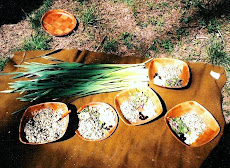









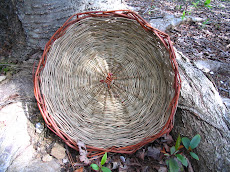



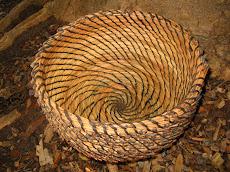



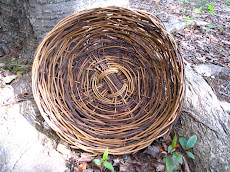

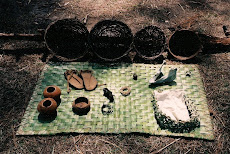


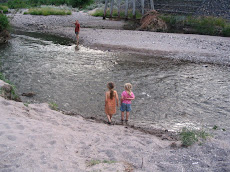

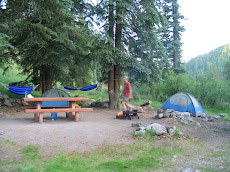


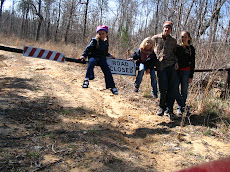

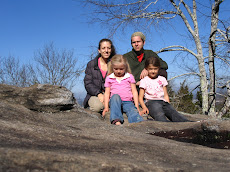




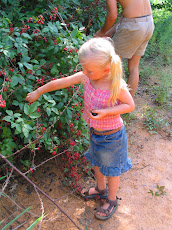







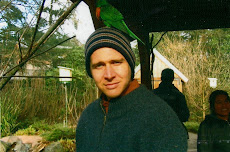
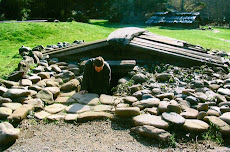

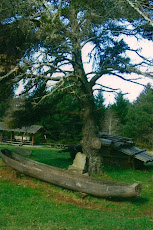



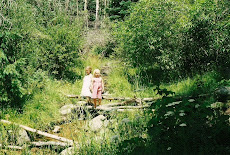
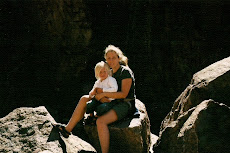
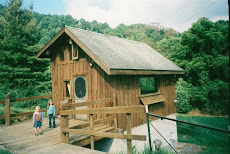


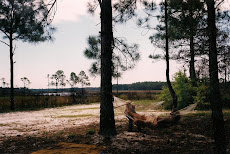

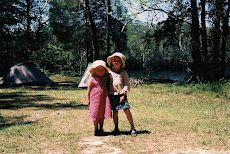.jpg)

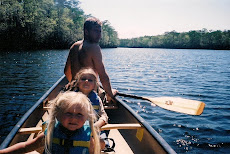.jpg)

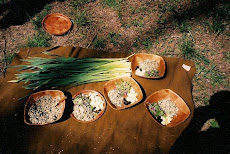
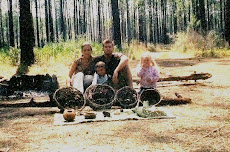
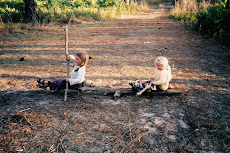.jpg)

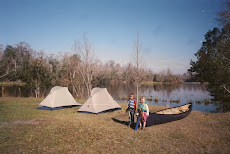

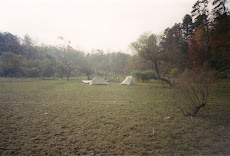
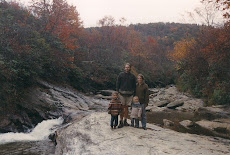
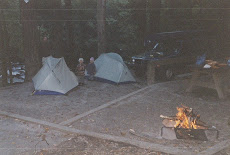


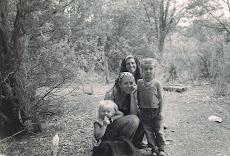.jpg)
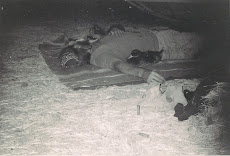.jpg)

.jpg)
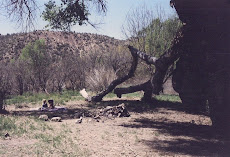.jpg)
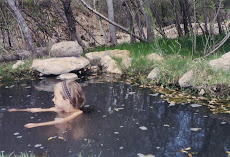
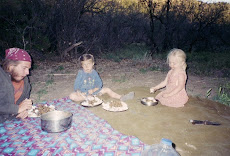.jpg)
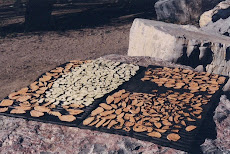
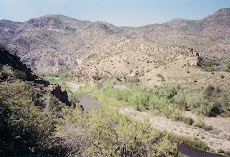.jpg)


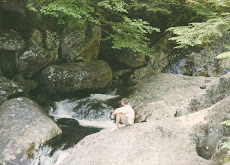

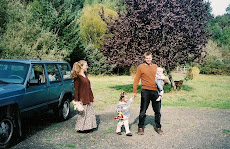





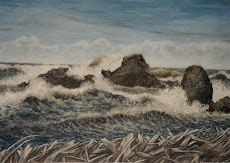




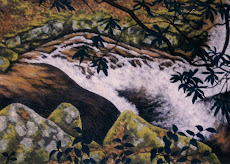






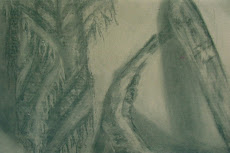

11 comments:
Black Berry Evergreen Tree Appears To Be...
Prunus Caroliniana
Black Cherry Laurel
Listed as somewhat edible. Seeds contain cyanide though :-).
Thanks for all the great info! Love your site. Newly transplanted to TN so am going to be digging through your lessons on here.
Spaceape48@yahoo.com
wow so great to find you on the net.Met you up Turkey Creek one spring years ago,just after the motel birth-you made diapers from moss.Always wondered what became of you-floating the gila later this month for a week.Glad to have met you and take care.john4
John! Incredible. How did you find me? I tried to click on your profile to write you directly but it's blocked.
Have you read 'DRIFTERS'? You're in it! At least for a few chapters. Do you still keep in touch with Dave? Have you still got your own shop in Oklahoma? Did Dave ever move down to Mule Creek to be near his dad?
Let me give you my email -
robatsunbright@gmail.com
Tell me how your life's gone since Turkey Creek.
Remember when you guys had suggested we get llamas for the Continental Divide Trail? It's one thing we never got a chance to try.
Remember the blue jeep, and how you guys guided me across the rubble? On the way out I blew the engine fording the river. We got it replaced in Silver, and ultimately abandoned the car in a motel parking lot with 320k miles.
Read your email. john4
OK Rob I've joined the group.
Great to be connected. Love you all.
d
I just purchased property in the foothills of Fredonia Mountain (Dunlap TN) and am homesteading it now. I would like to meet and learn from others in the area. my email address is thymesg@gmail.com ;o)
A beautiful 3-tiered garden in Patcham is being cared for now by England's Gardens...Shrubs For Sale
I love this blog about wild edibles. I would like to follow you more, do you have a facebook page by chance?
Rob I'm still here in tulsa. Dave and dusty are outside of durango co.
floated the gila again about four springs ago for 10 days and as expected
had a fuggin blast:) hope your well and family is healthy and happy!
if you ever pass through here, know that you have a place to stay here:)
john
Greetings -
My husband and I bought our place in Middle Tennessee in October 2011, and I've been adding native medicinal and culinary plants, herbs, and will soon be adding mushrooms, as well.
We're roughly midway between Nashville, Knoxville, and Chattanooga, and about 22 miles south of Cookeville, so officially in the middle of nowhere.
For several years, we joined a local mycology group, and went on a number of mushroom walks with them - once, when I was going alone to a meeting at a member's house, I got hopelessly lost, but for a reason - having realized I had missed my turn, I turned around in a church parking lot, and just off the parking was a good sized oak - with a HUGE colony of chicken of the woods near its' base.
Score!!!
I took about a third of the colony, as I was taught by my plant judge, naturalist grandmother - a third for me, a third for wildlife, and a third for the next forager.
I was blown away by how many in the group said they would have taken it all. A sad statement on the current state of our nation's thpughtless inhumanity toward others.
I also found an edible plant walk, with a different group out of Monterey, and was able to score a native witch hazel, some hog peanuts and ground nuts, and a few other non-endangered native plants over the years I spent taking their plant walks.
In any case, I'm glad to have found your blog, and especially considering that it's fourteen years old, I sincerely hope that you're still at it.
Have a wonderful evening and week, and I hope to connect with you, as edible and medicinal plants and mushrooms are a longtime interest of mine.
Post a Comment